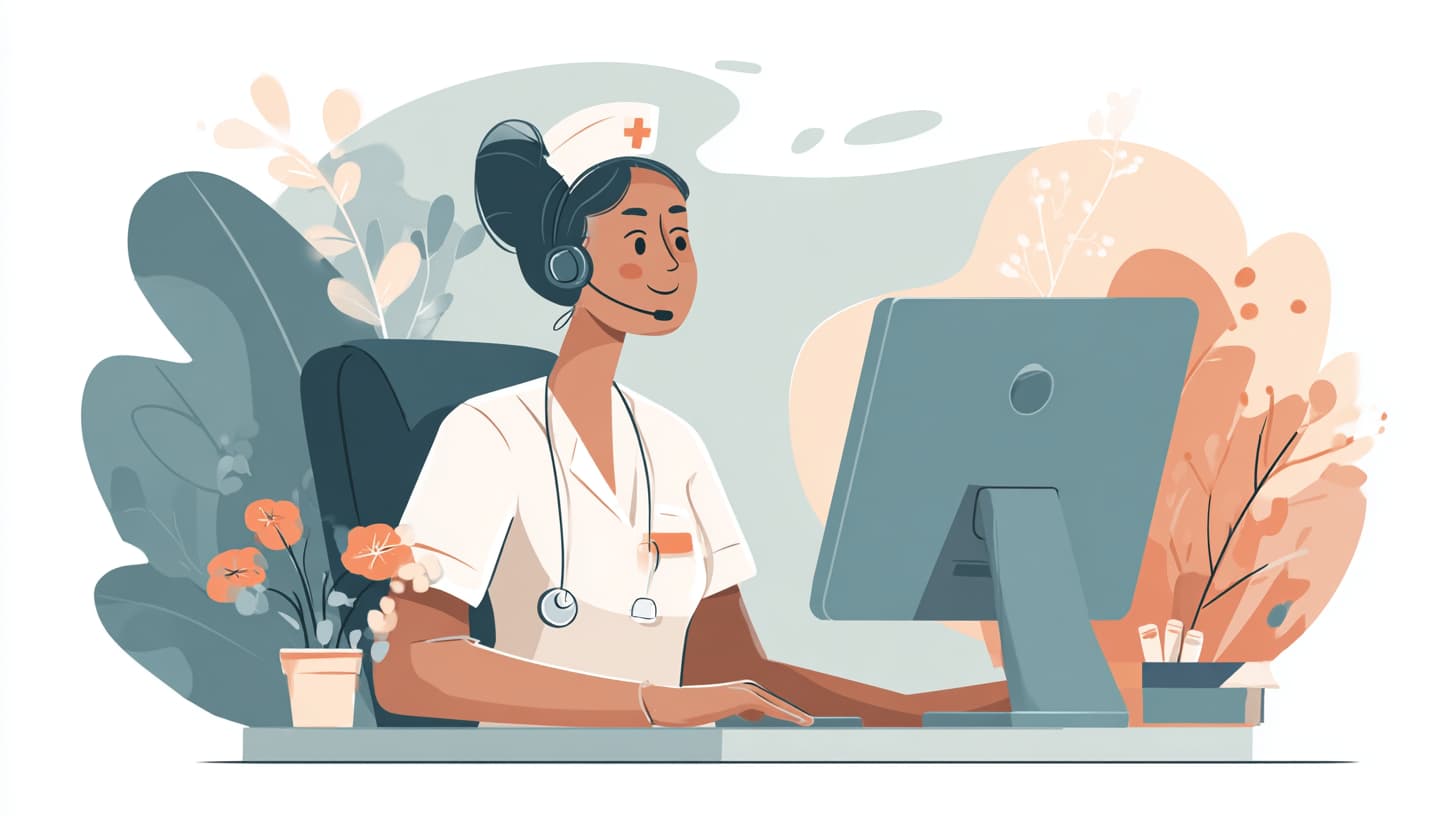Remote Patient Monitoring 101: What It Is and Why It Matters

It’s 7:15 a.m., and Dr. Allen logs into her dashboard before heading into the clinic. At the top of the list: a 72-year-old patient whose blood pressure readings have been steadily climbing over the past week. She hasn’t been in the office in months, but thanks to a small connected device on her nightstand, her physician team caught the change before it spiraled into a costly hospitalization. A quick call is made, medication is adjusted, and a crisis is averted—without a single waiting room chair being filled.
This is the power of Remote Patient Monitoring (RPM). More than a passing trend, RPM has emerged as one of the most practical ways for providers to keep patients healthier, reduce avoidable hospitalizations, and generate sustainable revenue—all while making care more proactive.
What Is Remote Patient Monitoring?
Remote Patient Monitoring is a healthcare delivery method that uses connected digital devices to capture a patient’s physiologic data outside the clinic—such as blood pressure, heart rate, weight, blood glucose, or oxygen saturation—and securely transmit it to the care team. Unlike telehealth, which is often episodic, RPM provides a continuous stream of clinically relevant information that guides day-to-day decisions.
The Centers for Medicare & Medicaid Services (CMS) recognizes RPM as a billable service under four main CPT codes:
- 99453 — Initial device setup and patient education.
- 99454 — Device supply with daily recordings or programmed alerts for at least 16 days in a 30-day period.
- 99457 — First 20 minutes of clinical staff, physician, or other qualified health professional time in a calendar month, requiring synchronous interactive communication with the patient.
- 99458 — Each additional 20 minutes of such communication.
These codes can be billed for both acute and chronic conditions when the service is reasonable and necessary for diagnosis or treatment.
How RPM Works: From Device to Clinical Action
In a successful RPM program, three key steps create a bridge from a patient’s home to meaningful clinical action.
First, patient device deployment. A patient receives a connected device—such as a blood pressure monitor, pulse oximeter, or glucometer—that sends readings automatically through cellular or Bluetooth connection. The technology is designed to work seamlessly in the background so patients can focus on their health, not the mechanics of data transfer.
Next, data transmission and storage. Each reading flows securely to a HIPAA-compliant cloud platform, where it is displayed in the provider’s RPM dashboard. Sophisticated systems don’t just store numbers; they trend data over time, flag anomalies, and surface the patients most in need of attention.
Finally, clinical review and intervention. Trained care team members review incoming information, decide whether action is warranted, and follow up. That might mean adjusting a medication, scheduling an earlier visit, or providing targeted lifestyle coaching.
Which Patients Qualify for RPM?
Medicare does not limit RPM to specific diagnoses, but the service must be medically reasonable and necessary. In practice, it is often used for:
- People living with chronic conditions such as hypertension, diabetes, chronic obstructive pulmonary disease (COPD), or heart failure.
- Post-surgical patients who require close monitoring to reduce complications.
- Patients whose unstable vital signs or recent exacerbations place them at high risk of hospitalization.
- Individuals with significant travel or mobility barriers.
Consider the rural patient with heart failure who faces a two-hour drive for a basic checkup. With RPM, their daily weight and blood pressure are tracked remotely, allowing early intervention if fluid retention begins—often avoiding a costly, dangerous hospitalization.
Benefits of RPM for Providers
The value of RPM extends well beyond patient satisfaction surveys.
Earlier intervention and better outcomes. A hypertensive patient’s blood pressure spike can be spotted and addressed within days instead of months. Such early action reduces emergency department visits, improves medication adherence, and slows disease progression.
New revenue streams. As of CY2025, national non-facility rates are about $19 for CPT 99453, $50 for CPT 99454, and $50 for CPT 99457. Billing for 100 patients each month under CPT 99454 and 99457 alone can yield around $10,000 in recurring revenue, not counting additional time under CPT 99458.
Improved operational efficiency. By narrowing outreach to patients with abnormal readings, providers can focus staff resources where they make the most impact, reducing unnecessary visits while elevating quality for high-risk patients.
Stronger patient engagement. Daily data turns patients into active participants in their care. Seeing their own numbers improve can be powerfully motivating.
Benefits of RPM for Patients
For patients, RPM translates into fewer in-person visits, more timely interventions, and a sense that their care team is always close by.
It means reduced hospitalization risk thanks to early detection. It fosters better self-management through immediate feedback. It’s a lifeline for those with mobility or transportation challenges. And it deepens the relationship with the care team by making health monitoring a shared, continuous process rather than an occasional appointment.
Implementation Strategy for RPM in a Practice
Adopting RPM is not just a technology decision; it’s an operational shift. The most successful programs start small and scale with confidence.
Begin by choosing the right technology partner—ideally a HIPAA-compliant platform that integrates with your EHR, offers cellular-enabled devices for patients without reliable internet, and allows for customizable alerts.
Next, define enrollment criteria. Many practices launch with a focused group—say, patients with uncontrolled hypertension—before broadening to other conditions.
Then, train your staff so every nurse, medical assistant, and care coordinator understands both the clinical workflows and Medicare’s billing requirements. Lara Health provides guided onboarding and best-practice protocols to make this transition seamless.
Finally, establish clear workflow protocols: who reviews alerts, how often, and what the escalation steps are. This clarity prevents alert fatigue and ensures prompt action when it matters.
ROI and Financial Impact
Let’s take a straightforward example. If your practice enrolls 100 patients in RPM, billing CPT 99454 ($50) and CPT 99457 ($50) monthly, that’s $100 per patient. Total: $10,000 in recurring monthly revenue. This figure excludes any additional revenue from CPT 99458 or the cost savings from avoided hospitalizations—which, in high-risk populations, can be significant.
Common Pitfalls and How to Avoid Them
Three common missteps can derail an RPM program:
Over-enrollment without adequate staffing. If too many patients are added before workflows are ready, alert fatigue can set in.
Poor patient onboarding. If patients don’t understand how to use devices, data quality suffers.
Ignoring alerts. Prompt response to abnormal readings is the cornerstone of trust and clinical value.
Lara Health’s platform supports capacity-based enrollment planning, provides patient-friendly device guides, and embeds alert triage into your daily routine.
Compliance and Audit Readiness
RPM services fall under Medicare documentation rules. This means you need to document patient consent, device setup and education, at least 16 days of readings in a 30-day period for CPT 99454, and time spent in synchronous communication for CPT 99457/99458.
With Lara Health, much of this is automated: eligibility verification, consent collection, device shipping and tracking, and time logs for interactive communication are all captured in the platform—keeping you audit-ready without adding manual burden.
Every RPM data point is an opportunity—an early warning, a prompt for education, or a reassurance that treatment is working. Learn more about remote patient monitoring with Lara Health and see how proactive, connected care can transform outcomes for your patients and your practice.
FAQs
Is RPM covered by Medicare?
Yes, Medicare covers RPM under CPT codes 99453, 99454, 99457, and 99458 when all requirements are met.
How often must RPM data be collected?
For CPT 99454, you must collect at least 16 days of data in a 30-day period.
Can RPM be billed alongside Chronic Care Management (CCM)?
Yes, provided that time spent is not double-counted.
Sources
CMS, CY2025 Physician Fee Schedule Final Rule, 2024.
American Medical Association, CPT® 2025 Professional Edition, 2024.
AHRQ, Telehealth: Remote Monitoring for Patients with Chronic Conditions, Evidence Brief, 2023.
Lara Health's platform helps medical practices deliver better patient outcomes and stronger financial performance.
Our platform streamlines chronic care management (CCM), remote patient monitoring (RPM) and advanced care coordination − empowering your team to focus on care, not paperwork.
With a powerful billing engine supporting 55+ CPT codes, Lara Health simplifies reimbursements and optimizes every step of your workflows.
See how it works, or discover how Lara Health is shaping the future of connected care.
To learn more about our mission, start here. If you're looking for a new career direction, check out our recruiting pages.




